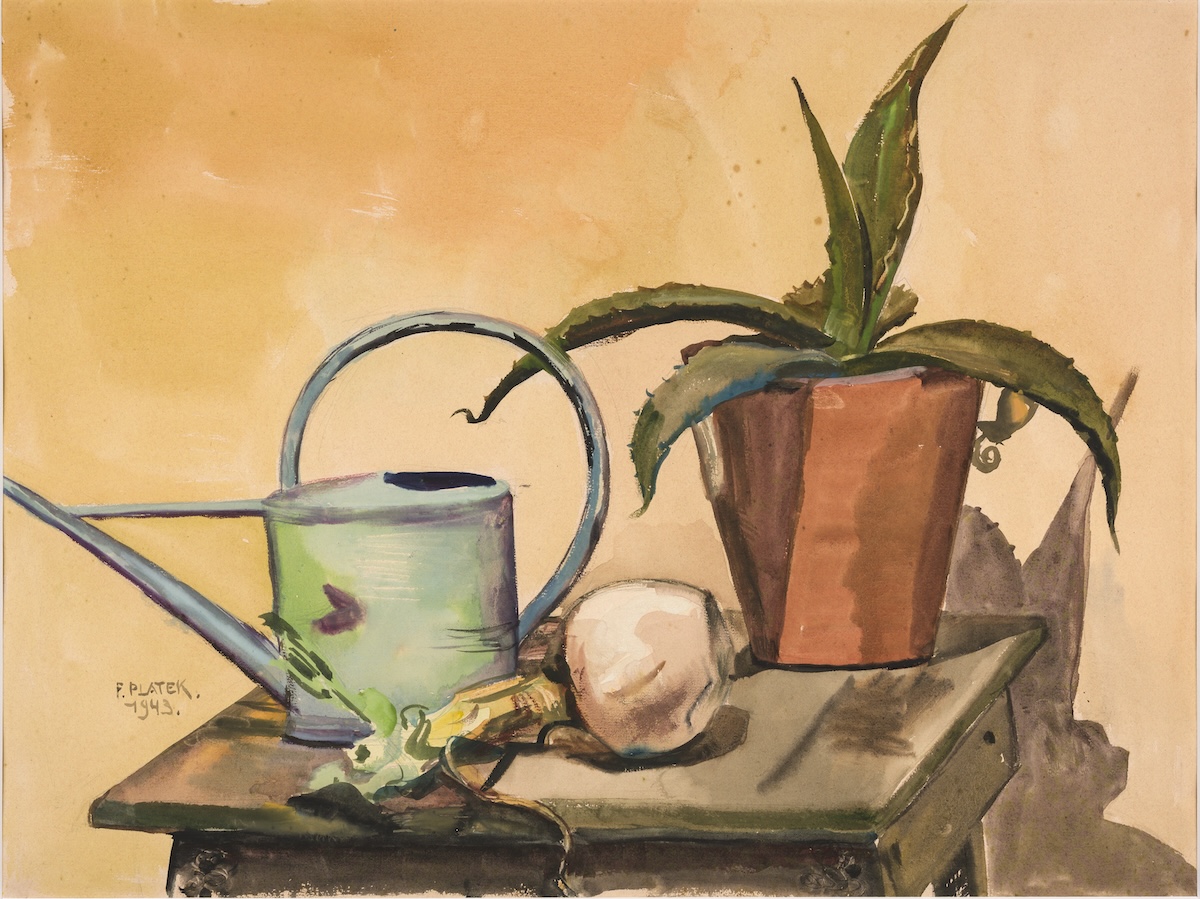

Felka Platek – Artist and Companion of the Painter Felix Nussbaum
Presentation by Anne Sibylle Schwetter, Osnabrück (Germany)
November 20, 2024 @ 12:00 pm - 1:00 pm
| FreeFelka Platek (1899 Warsaw – 1944 Auschwitz) came to Berlin from Warsaw in the early 1920s to become a painter. In 1932 she followed her friend and later husband Felix Nussbaum (1904 Osnabrück – 1944 Auschwitz) to Italy. In 1935 they decided to go into exile in Belgium. However, neither of them could escape persecution by the Nazis. They were captured in their hiding place in Brussels on June 21, 1944 and murdered in Auschwitz shortly afterwards.
Image above: Felka Platek, Self-portrait in front of an open window, around 1940. Gouache on drawing paper, 65 x 49.7 cm. Felix-Nussbaum-Haus at Museumsquartier Osnabrück, on permanent loan from the Felix Nussbaum Foundation, photo © Felix-Nussbaum-Haus Osnabrück
Anne Sibylle Schwetter’s presentation provides an insight into Platek’s artistic work, from her earliest works from 1927 to the last known graphics, which were created in hiding in 1943.

Felka Platek, Portrait of a young woman (self-portrait?), 1927. Oil and gouache on olive green paper, 70 x 50 cm. Felix-Nussbaum-Haus at Museumsquartier Osnabrück, photo © Felix-Nussbaum-Haus Osnabrück

Felka Platek, Still life with watering can and agave, 1943. Gouache on paper, 48 x 63 cm. Felix-Nussbaum-Haus at Museumsquartier Osnabrück, photo © Felix-Nussbaum-Haus Osnabrück
In contrast to that of her well-known artist colleague and husband Felix Nussbaum, Felka Platek’s life and work remain fragmentary to this day. Only around 30 of her works have survived. The little that is known about Felka Platek’s life is based primarily on research carried out as part of the research into Felix Nussbaum.
Although her life and work are fragmentary, the surviving images nevertheless bear impressive witness to an artist’s biography that was broken by exile, flight and persecution. The lecture provides an insight into Platek’s artistic work, from her earliest works from 1927 to the last known graphics, which were created in hiding in 1943.


Felka Platek, Still life with African sculpture and umbrella, 1943. Watercolor on handmade paper, 63 x 48 cm, Felix-Nussbaum-Haus at Museumsquartier Osnabrück, on permanent loan from the Felix Nussbaum Foundation, photo © Felix-Nussbaum-Haus Osnabrück
Anne Sibylle Schwetter is an art historian and curator of the Felix Nussbaum Collection at the Felix-Nussbaum-Haus in Osnabrück. She has devoted herself to the life and work of the German-Jewish painter Felix Nussbaum (Osnabrück 1904-Auschwitz 1944) for more than 20 years and is in charge of the artist’s catalogue raisonné. The scientific research project Online Catalogue Raisonné Felix Nussbaum (last published 2006-2018) is due to be published in a revised form in 2025. In addition to managing the artist’s collection and archive, she curates exhibitions on Felix Nussbaum and classical modern art such as Seeing Nussbaum differently – New perspectives on the Felix Nussbaum Collection (2020) and Danse Macabre. Dance and Death in the Art of the Early 20th Century (2017) or most recently together with Mechthild Achelwilm and Alejandro Perdomo-Daniels #nichtmuedewerden. Felix Nussbaum and artistic resistance today (2023/24). In 2024 she was a short-term fellow at the Villa Massimo in Rome.
The exhibition “Felka Platek – eine Künstlerin im Exil“ is on view until May 11, 2025 at Felix-Nussbaum-Haus. It is accompanied by a publication.


